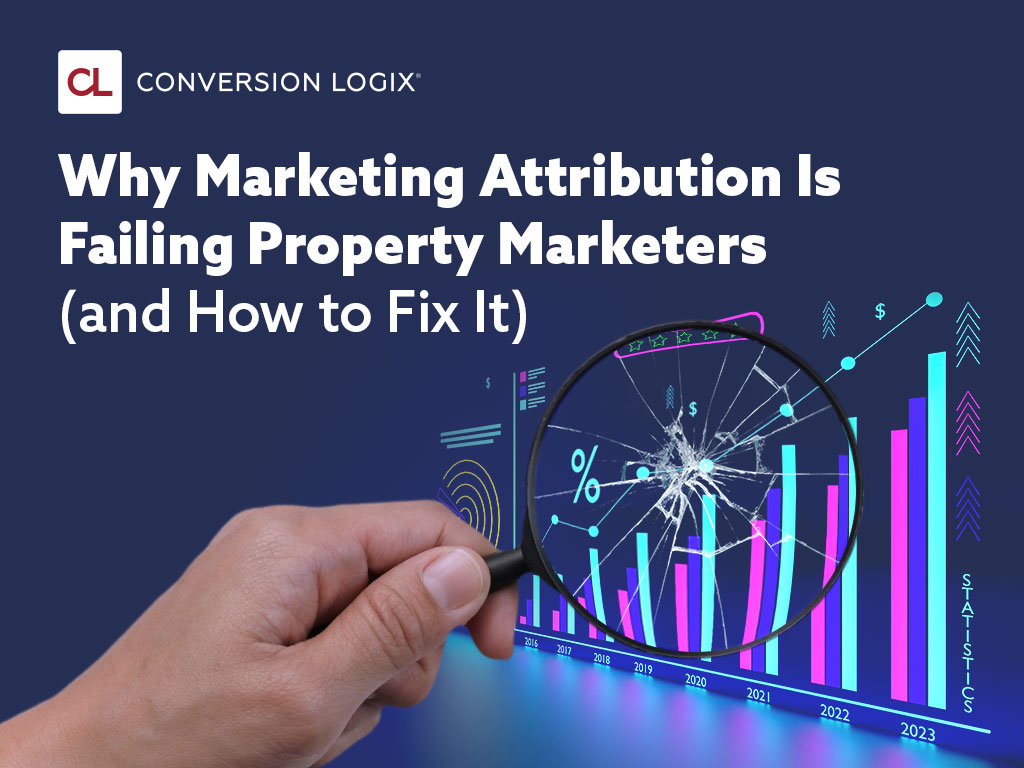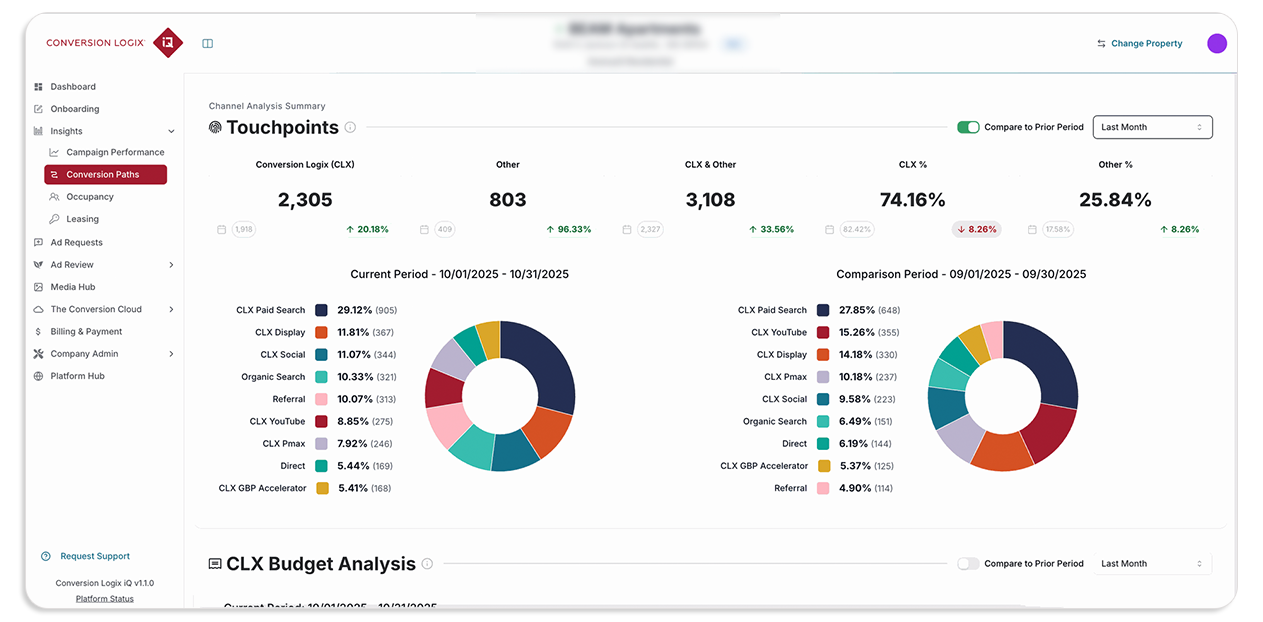Why Marketing Attribution Is Failing Property Marketers (and How to Fix It)
- 26 November 2025

According to a 2025 EMARKETER and TransUnion study, nearly 3 in 10 U.S. marketers surveyed saw up to 20% of their budgets cut because decision-makers didn’t trust their measurement data.
Marketers are investing more in analytics tools than ever, yet confidence is plateauing. For multifamily and senior living marketing leaders, this lack of clarity can mean wasted ad spend, misguided budget cuts, and fewer qualified leases or move-ins.
How did we get here, and what can we do about it? In this blog, we will walk you through the current state of marketing attribution in the multifamily and senior living industry and the solutions our team has developed to overcome these challenges.
What’s Wrong With Today’s Attribution
54% of U.S. marketers surveyed report no change in confidence year-over-year; 14% say it’s declined.
The top causes:
- Siloed data (49%)
- Cross-channel deduplication issues (48%)
- Closed system reporting limitations (41%)
The average marketing report is a patchwork: one story from Google Ads, another from Meta, another from your ILS or CRM. This leads to conflicting data and internal doubt.
Fragmentation is just one half of the problem. The other? The models most marketers use in today’s out-of-the-box reporting frameworks are fundamentally flawed.
The Hidden Cost of Last-Touch Attribution
Let’s be honest. The way most marketers measure success is a little… old-fashioned.
Most marketers still measure performance using last-touch attribution, which rewards only the final click before a prospect converts into a lead.
Last-touch attribution gives all the credit to whoever scored the last point, even if three other channels did the heavy lifting to get the prospect there. It’s like giving the trophy to the last player on the court while ignoring the team that passed the ball, set up the play, and ran defense.

This creates a lower-funnel fixation, which results in:
- Overinvesting in search and remarketing
- Cutting upper-funnel campaigns such as Paid Social and Display
- More competition in search engines
- Higher costs per lead
By giving too much credit to the last channel, marketers end up overspending on conversions while experiencing a shrinking lead pipeline, which results in less confidence in their strategies.
To rebuild confidence, marketers need to see every digital touchpoint that contributes to a conversion, not just the last click.
Fixing Marketing Measurement With Unified Attribution
Unified Attribution doesn’t play favorites. It tells the whole story.
Instead of just reporting on that final click, at Conversion Logix we leverage a Unified Attribution model to connect the impressions, site visits, and ad interactions that contributed to a propsect converting into a lead. If a renter first saw your display ad, clicked a YouTube video, then came back through search hours later, all of those touches matter. With a Unified Attribution approach, each channel gets the credit it deserves.
And because this model tracks impressions, not just clicks, you can finally see how top-of-funnel channels like Display, Video, and Social are quietly pulling more weight.
Take a look at the difference between these two reports. With last-touch attribution, you’d draw all of the wrong conclusions about your performance. With Unified Attribution, it’s clear that channels like Display and YouTube perform better than assumed, and end-of-funnel strategies like organic search were actually less critical to conversions.
Within our marketing operating system, CLiQ, this level of attribution reporting comes to life through simple, visual reporting.

You can literally see which touchpoints worked together to drive a lease or a move-in. It’s like having X-ray vision for your marketing mix.
Once you can see the full picture, optimizing becomes a lot less like guessing and a lot more like guiding. You can stop cutting what’s actually working, stop overpaying for leads, and start building campaigns that deliver measurable results.
Unified Attribution brings your data together, your team together, and frankly, your sanity back because making confident decisions shouldn’t require a week of spreadsheets and a séance with your analytics dashboard.
From Confidence Gap to Competitive Advantage
The EMARKETER and TransUnion study found that teams that trust their measurement data are far more likely to gain budget, while the ones swimming in uncertainty often lose it. Confidence doesn’t just feel good; it funds your future.
That’s where Unified Attribution changes the game. By revealing what’s actually working across channels, our multifamily and senior living ad operations specialists, account managers, and digital strategists can help you make smarter campaign decisions, faster than ever before. No more guesswork, no more defending vague metrics in meetings. You’ll know exactly which channels drive leases, which campaigns deserve more love, and which ones need a rethink.
Schedule a call to learn how Unified Attribution reporting can help you go from chaos to clarity.
Schedule a Call